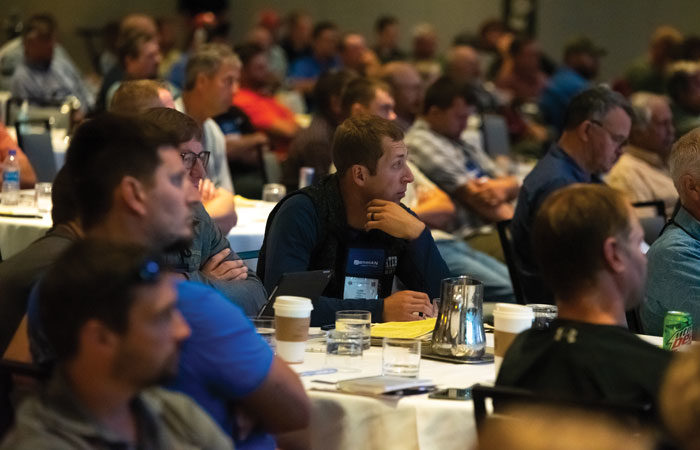No-Till Farmer
Get full access NOW to the most comprehensive, powerful and easy-to-use online resource for no-tillage practices. Just one good idea will pay for your subscription hundreds of times over.

IN SESSION. Attendees at the 2022 National Strip-Tillage Conference take notes as University of Minnesota extension educator Jodi DeJong-Hughes dispels myths about compaction. More than 350 farmers, agronomists and industry experts attended the conference in Iowa City, Iowa.
From practical advice on alleviating compaction to conflicting views on soil health to a former NASA engineer’s new yield-boosting technology, the 2022 National Strip-Tillage Conference sent attendees home with many new ideas to try on their operations — and a lot to talk about at the coffee shop.
More than 350 farmers, agronomists and industry experts attended the 9th Annual Strip-Tillage Conference in Iowa City, Iowa, at the end of July. Modeled after the National No-Tillage Conference, the 2-day event featured dozens of general sessions, classrooms and roundtables to facilitate discussions about practical, proven strategies for successful strip-tilling.
Independent soil health specialist Jim Hoorman hosted the unofficial start of the conference with a workshop on boosting your bottom line with mineral nutrition and humates. Micronutrients are one of the most cost-effective ways to boost yields with fertilizer prices as high as they are, Hoorman says, because the plant will shut down if it’s lacking micronutrients.
“Most diseases are associated with some kind of mineral deficiency,” Hoorman says.
In addition to soil and tissue testing, farmers should look for visual signs of micronutrient deficiencies starting around V2. Corn and sorghum plants will show deficiencies on the plant. Small dash lines, often referred to as railroad tracks or zippers, between the edge of the leaf and the mid-rib will indicate a calcium deficiency, for example. In soybeans, calcium deficiency will appear as crinkling in and around the plant’s leaves.

These are just a…